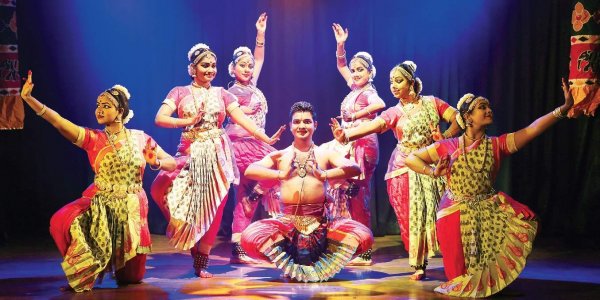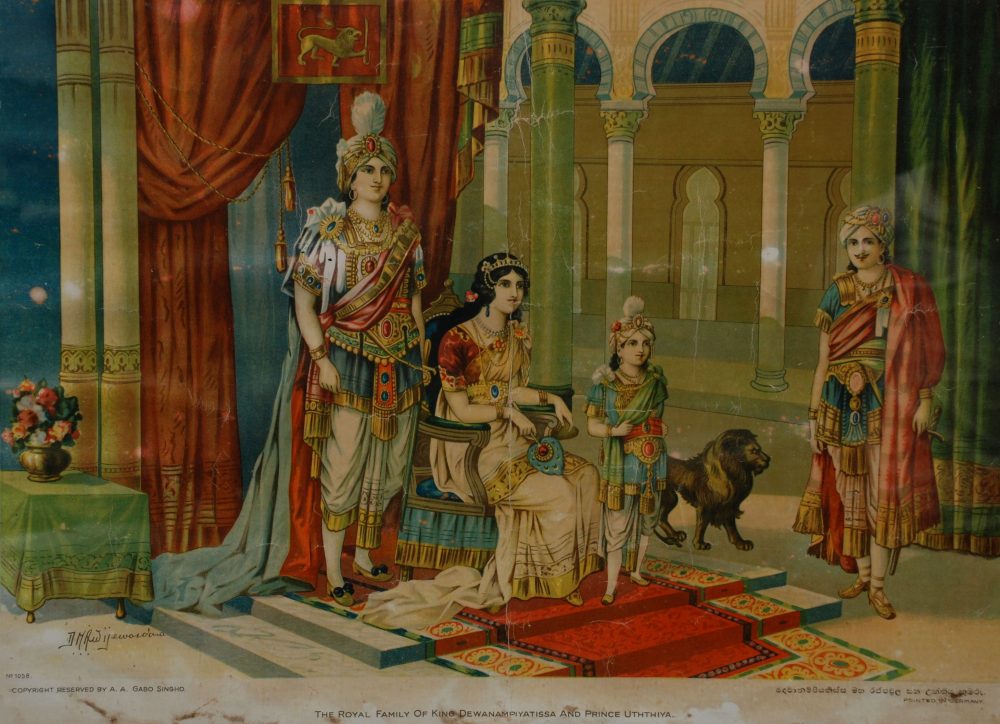
Resplendent with ancient wars, high romances, and complex intrigues, Sri Lankan history holds a diverse assortment of extraordinary personalities immortalised in the pages of history books for their heroic deeds, wisdom, kindness, courage, cunning, or even cruelty. Most of these characters were men, and although sparse, historical literature does mention a few notable female royals who appear to have played important roles in shaping the country’s history…and we get the feeling that if they were still around, some of these ancient queens would be miffed with the way they have being characterised today.
It often seems as though all those ancient kings and long-ago male heroes have neatly nudged their female counterparts out of the spotlight. After all, when speaking of our country’s past, how often have you heard people casually throw out the words “Sri Lanka’s great kings” with no thought for the queens that once reigned? How is it that the great women who have helped shape history and heritage hardly ever receive a moment in the limelight, while the kings, whether villains or tyrants, cowards or heroes, hog all the attention to themselves? And how is it that even when these women do find their way to prominence, it is often for the wrong reason entirely, namely to bolster the image of the king in question rather than to give them significance in their own right? Of course, present day male glorification is partly to blame, but we’re pretty sure our ancient female royalty would have a bone to pick with the Mahavamsa’s esteemed chroniclers as well.
Don’t get us wrong; the Mahavamsa is a gem of a chronicle. In fact, it’s the oldest and longest unbroken historical record in the world, and contains invaluable documentation of the country’s epic past. Yet, if you look beyond the multitude of colourful events and fantasy epic-style tales, you will notice that while the records provide ample details of politics and religion, women get scant mention in them. Even those women who are brought up are more often than not only portrayed as secondary characters, mere sideshows in a much larger epic tale of wars and conquests with the kings sitting resplendent in the spotlight. A good example of this was Queen Kusumana Devi, the last empress of the Kandyan Kingdom. The actual heir to the throne, she was married off to Wimaladarmasuriya I so he could establish his own power as king through her. However, her political importance is hardly highlighted in historical texts, possibly so as not to dilute the sovereignty of Wimaladarmasuriya.
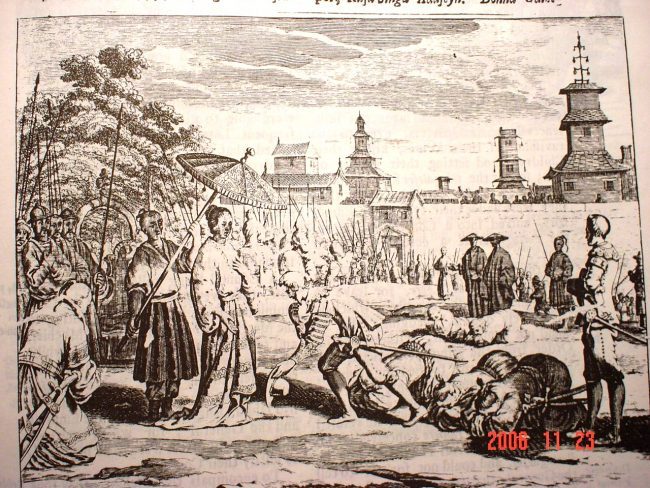
Dona Catherina being welcomed by the General Conquistador Pedro Lopez de Souza. Also known as Kusumana Devi, she was the heir to the Kandyan throne, but her significance has been downplayed by authors of historical texts. Image courtesy: wikimedia.org
More than a cursory glance is needed if you want to spot subtle undercurrents of male glorification and gender stereotyping present in the Mahavamsa. A good king, according to historical texts, was a warrior who rode to war, slew his enemies, trampled his opponents, and built lots of temples. On the other hand, a good queen was one who was beautiful, came from indisputable royal lineage, gave birth to great kings, and remained devout all her life. Kings more often than not had more than one queen and owned harems filled with concubines, while female royals were expected to remain paragons of virtue as pure as driven snow (it is a well-known fact that the punishment for a man caught bedding the queen was being boiled alive). In fact, many kings who committed unspeakable crimes are painted in the best possible light in historical texts and remain heroes to this day, their atrocities forgotten in the light of their other conquests.
No, it’s certainly not fair, so in the spirit of remembering those long-ago female royals of Lanka’s bygone eras, here are a few of the great queens who have had received mention in historical texts – and how we think they have been portrayed.
Queen Anula Of Anuradhapura
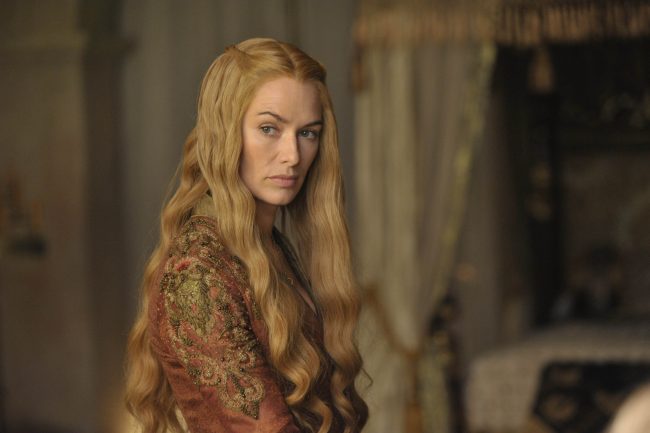
So you thought Cersei Lannister is scheming? Sri Lanka’s black widow-like Queen Anula could give Cersei a run for her money: Anula poisoned her way through six husbands and is said to have kept a whopping thirty-two palace guards for the sole purpose of satisfying her sexual desire. Yet on the flip side, her atrocities pale next to those committed by some of her male counterparts, which begs the question: why is she the only one vilified? Image courtesy: giantbomb.com
She may have entered the annals of Sri Lankan history as the first female to head a state in Asia, but Lanka’s first queen is not depicted as someone you would want to be taking up as a role model.
Queen Anula ruled in Anuradhapura from 47 to 42 BC, a reign filled with covert love affairs, a series of murders, plenty of poison, a lot of deception, scheming and intrigue, and of course, a string of hapless husbands who all fell victim to her mantis-like tendency to marry men and then have them killed. In fact, the Mahavamsa is quite uncharacteristically generous in its description of the all the atrocities she committed, painting her in no uncertain terms as a tyrannical, evil nymphomaniac with words like “wicked”, “infamous” and “licentious”. This is strange in itself, considering the extent of the crimes committed by some of our male monarchs, but her story does make interesting reading, so here it is. Let us just condense the whole fiasco of her time in the Mahavamsa’s spotlight by giving you a list of all her unfortunate husbands.
1. King Coranaga (62-50 BC). He was said to be a harsh and unpopular ruler, who reigned for twelve infamous years with Anula as his queen consort. Anula, who was carrying on a clandestine affair with a palace guard called Siva, put an end to the old king’s reign when she dispatched him with poisoned food. However, her plans were foiled when the throne was immediately seized by Kuda Tissa.
2. Kuda Tissa (50-47 BC). He was the son of Coranaga’s predecessor, who eventually forgave Anula and took her as his queen consort. This, however, was to be his undoing; he managed to stay alive for three years before Anula poisoned him to get him out of the way so she could wed her aforementioned palace guard paramour.
3. Siva. Anula’s amorous conquests seem to have been notoriously short-lived; Siva had only been on the throne for a little more than a year before she murdered him as well, after developing a passion for a commoner called Vatuka.
4. Vatuka. He was a city carpenter. Anula took him as her consort and he ruled in Anuradhapura for a year and two months before meeting his doom (yes, poisoned again) when his queen fell for a wood-carrier by the name of Tissa.
5. Tissa. Anula gave the government over to her new paramour, who managed to stay alive for a year and a month. In the spirit of carrying out his kingly duties, he built one bathing tank in Mahameghavana before Anula tired of him and poisoned him as well, so she could marry her newest paramour, a Brahmin and palace priest.
6. Niliya. He ruled for all of six months when Queen Anula decided to just do away with him as well and simply reign by herself.
Queen Anula (who, according to the Mahavamsa, was said to have “taken her pleasure” from thirty-two palace guards) proceeded to rule Sri Lanka on her own for four months before she was finally deposed by Kutakanna Tissa, the second son of Coranaga’s predecessor who had gathered an army and returned from his exile to take the throne. It is said that Queen Anula was burned alive within the palace itself upon a funeral pyre – a grisly end to a grisly reign.
Yes, she was pretty much the typical evil queen. In fact, there is no denying that Queen Anula’s moral compass was sadly misdirected, but in their righteous indignation and outrage, the Mahavamsa’s authors seem to have forgotten that a good number of Lanka’s kings had committed atrocities far worse than hers. For instance, it is strange that historical texts convey so much outrage at the fact that she had many lovers when, despite an outward veneer of conservatism, polygamy was so much the norm in ancient Sri Lanka that it hardly even warranted attention in historical texts. Our ancient kings had lesser wives, concubines, and illegitimate children by the truckload, yet this was considered a sign of prestige rather than immorality. Anula actually seems positively chaste when compared to kings like Kashyapa, who could have Playboy Hugh Hefner green with jealousy with his five hundred concubines who occupied the pleasure quarters of Sigiriya.
As for the fact that she committed murder, so too did many of our kings, and much of their atrocities are far more barbaric than hers. Sri Lankan history actually runs red with the blood of countless depositions and murders, and most kings were warriors to whom killing was second nature. Yet, when a king felled an enemy (or in some cases like King Valagamba’s, who slew his own minister for not bowing to him, even someone who was not an enemy), he is often portrayed as a swashbuckling hero rather than a villain, with his crimes simply brushed aside as non-events of no particular significance. We’re not saying that Anula is a model ruler, of course; we are simply pointing out that she is seen in a much less forgiving light than her male equivalents, whose misdeeds were much worse than hers.
Queen Soma Devi
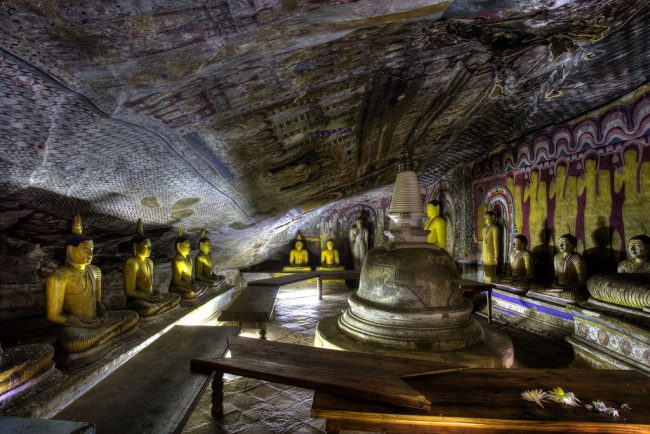
The Soma Chaitya in the Dambulla Rock Temple, named after Valagamba’s Queen Consort Soma Devi. Image courtesy: pcssr.com
In stark contrast to our unfairly vilified Queen Anula, is Soma Devi, often characterised as the selfless heroine and noble altruist, the very embodiment of courage and nobility and all things good.
Soma Devi, the second Queen Consort of Anuradhapura’s King Valagamba (103 BC and 89 BC- 77 BC) neither ruled nor wielded power. Her rise to prominence in history lies in the ultimate sacrifice she is said to have made to protect the king during an invasion. To put the story in a nutshell, just five months into the King’s reign, the country was invaded by seven Tamil generals who waged war against him in order to seize the throne. With his armies crushed and an inevitable defeat in sight, Valagamba, along with his young sons and his two queens, was forced to flee for his life. However, it was said that the chariot in which they took flight was too weighed down to move fast enough.
It is said that in order to lighten the chariot and give the King, his first Queen Anula Devi (who was carrying a child), and his two sons a chance to escape, Soma Devi sacrificed her own freedom and safety and alighted from the chariot. Then as the king fled, she attempted to hide herself in a thicket of flowering kadambas, but the enemy soon seized her. Enamoured by her beauty, one of the invading Tamil generals took Soma Devi as his consort and returned with her to India.
For fourteen years, King Valagamba stayed in hiding, gathering troops and preparing to get back the throne which was stolen from him while five of the Tamil generals ruled successively by killing each other off one by one. When he finally defeated the last invader and regained his place as King, Valagamba sent to India for Soma Devi, restored her as Queen Consort, and built in her honour a magnificent temple called Somarama.
People love embellishing the story with a wealth of dramatic details, adding tearful farewells and grand speeches, but the truth is, the unembroidered version in historical texts is hardly as theatrical as we make it out to be. According to William Geiger’s translation of the Mahavamsa, the text describing Soma Devi’s sacrifice simply goes like this:
He (King Valagamba) took Anula devi, who was with child, with him thinking “She must be protected” and Mahacula also, and his son, the prince Mahanaga also thinking “They must be protected.” But to lighten the car, the king gave to Somadevi his splendid diadem jewel and let her, with her own consent, descend from the car.
A bit of a departure from the dramatic scene you were expecting, isn’t it? Reading this, it is clear that the entire characterisation of Soma Devi as a great queen hangs solely on the four words “with her own consent.” Give the words less significance and she instantly becomes not so much the selfless, self-sacrificing heroine as the lesser queen consort obliged to give up her own life so her king and his first queen consort could flee to safety. Of course, the fact that he sought her fourteen years later, after regaining the throne, means he must have held some degree of regard for her. However, if you were a skeptic, it is easy to get the idea that by presenting Soma Devi as a heroine, we are merely taking people’s attention away from the fact that the king left her behind to an uncertain doom to save his own skin. So much for chivalry and courage.
That said, the words “with her own consent” do exist, and we prefer to give them some import and let Soma Devi keep her badge of honour.
Signs of King Valagamba’s regard for Soma Devi are still evident today in the small dagoba known as Soma Chaitya, which is named in her honour and can be found in the fourth cave of the Dambulla Rock Temple he built. The dagoba was once damaged by treasure hunters who mistakenly believed that it contained the jewellery of Queen Soma Devi.
Queen Viharamaha Devi
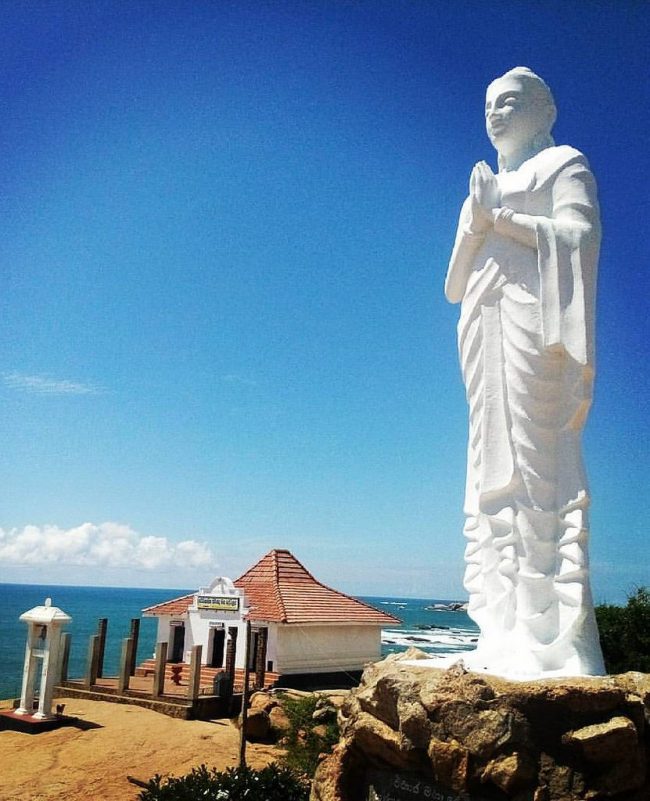
Immortalised in stone; the statue of Viharamahadevi in the Kirinda Temple marks the spot where her boat was said to have washed ashore. Image credit: Prasad Buddhika
From the famous Viharamahadevi Park you regularly visited as a kid to the gleaming statue standing tall in the coastal town of Kirinda, Sri Lanka is littered with namesakes and tributes to one of its most celebrated historical personalities, Queen Viharamahadevi.
The story of Viharamahadevi begins like a fairytale, complete with wrathful sea gods, a cruel king and the beautiful sacrificial princess. As history goes, the king of Kelaniya roused the wrath of the sea gods with his harshness when he punished a young monk by boiling him in oil. Angered, the gods caused the seas to engulf the land and, in order to save her people and atone for her father’s sins, the Princess Viharamahadevi was offered up as a sacrifice and set adrift on the sea in a simple golden boat bearing the words “A king’s daughter”. However, instead of perishing in the waves, she drifted back to land on the prosperous shores of the Kingdom of Ruhuna, where she was found and taken before King Kavantissa.
Her story so impressed and astounded the king that he took her as his queen. Thus, Queen Viharamahadevi was established in the Kingdom of Ruhuna as Queen Consort, and bore two sons, the legendary hero, King Dutugemunu, and Prince Saddhatissa.
Viharamahadevi is a legend; the sort of celebrated figure that you can easily see living on for centuries to come without ever losing her greatness. However, many people attribute Viharamahadevi’s greatness for the wrong reasons. Of course, the whole concept of the sacrificial princess makes a good story, but being offered up as a sacrifice by a maniac father is not exactly grounds for heroism. Neither is being the mother of a great king.
What truly makes her stand out in historical chronicles is the fact that, unlike most other female royals, Viharamahadevi does not just disappear from the scene as soon as events shifted focus onto her son, Dutugemunu. Her presence is strongly palpable right throughout his numerous conquests and war campaigns. Considering the patriarchy and male dominance that was the norm in those days, the idea of a prince seeking advice from his mother on battle strategy is almost laughable. But it was she who helped reconcile her sons after their bitter war, she who influenced, inspired, and mentored Dutugemunu during his many battles, and she who was consulted before important decisions were made.
However, though the Mahavamsa is lavish in its praises of her leadership, spirit, and active involvement in political affairs, it is quite noticeable that she quietly disappears from records soon after Dutugemunu finally claims kingship. Looked at from a certain light, it almost feels as though historical texts only use her to highlight the achievements of Dutugemunu rather than her own importance.
Unlike most women who crave things like pickles or pineapples during pregnancy, Queen Viharamahadevi’s behaviour when she was carrying Dutugemunu were rather strange, if not morbid. According to the Mahavamsa, her cravings included adorning herself with garlands of fresh lotus-blossoms brought in from the marshes of Anuradhapura and drinking water that had washed the blood off the sword which had struck off the head of one of King Elara’s warriors, whilst standing on the same head. Creepy. The only thing stranger, is that these longings were hailed by soothsayers as glad tidings of a son destined for greatness.
Viharamahadevi namesakes include the old Victoria Park, an open-air theatre, several public schools and even an aeroplane!
Queen Lilavati Of Polonnaruwa
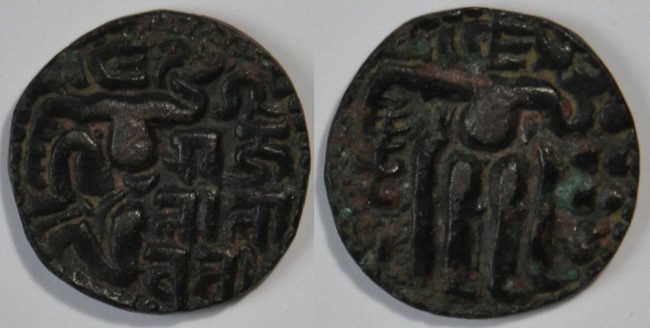
Caption: Heads or tails? A copper Massa coin from Queen Lilavati’s time. Credits: Wikipedia.org
Described in the Culavamsa as “being of the dynasty of the sun and moon” and “shining with royal splendour”, Queen Lilavati of Polonnaruwa was the third woman to ascend the throne in ancient Sri Lanka. However, she was the second female to actually wield the authority and power of a sovereign, and ruled the country on three different occasions.
Unlike with Viharamahadevi and Soma Devi, historical chronicles have recorded no dramatic tale, daring exploit, or selfless sacrifice regarding Queen Lilavati. The Culavamsa mentions nothing of her story, her children, or her life as Queen Consort of King Parakramabahu I. However, she was of royal lineage and venerable ancestry, and during a time when male dominance flourished and female authority was practically non-existent, Lilavati exuded a strong sense of dominance and sovereignty. While her latter period of reign was short-lived, ending abruptly with deposition, her first three years of rule (described as “three years without mishap” in the Culavamsa) were said to be a peaceful, devoted to the development of literature, music and art rather than warfare – a remarkable feat considering the chaotic times that followed King Parakramabahu’s death. Queen Lilavati may not appear to be as sensational as Anula or as legendary as Viharamahadevi, but she was nevertheless a notable female figure in Sri Lanka’s history.
An endemic spider found in Sri Lanka was named Shearella lilawati in honour of Queen Lilavati.
So the next time you find yourself speaking of our country’s history and (as most people are wont to do) offhandedly using the words “Sri Lanka’s ancient kings”, do check yourself; even in those war-ridden, testosterone-fuelled days, when men ruled and women submitted, there were noteworthy queens too. There is ample evidence that historical literature only selectively brought them into the spotlight, using them to bolster the stories of political heroes and kings, but we like to think that we did have strong-willed female royals who held their own in a male-dominated world and rose to (comparative) greatness through their deeds.
Featured image: King Devanampiya Tissa, Queen consort Anula, and Prince Uththiya, c. 307 BC. Image courtesy: wikipedia.org







